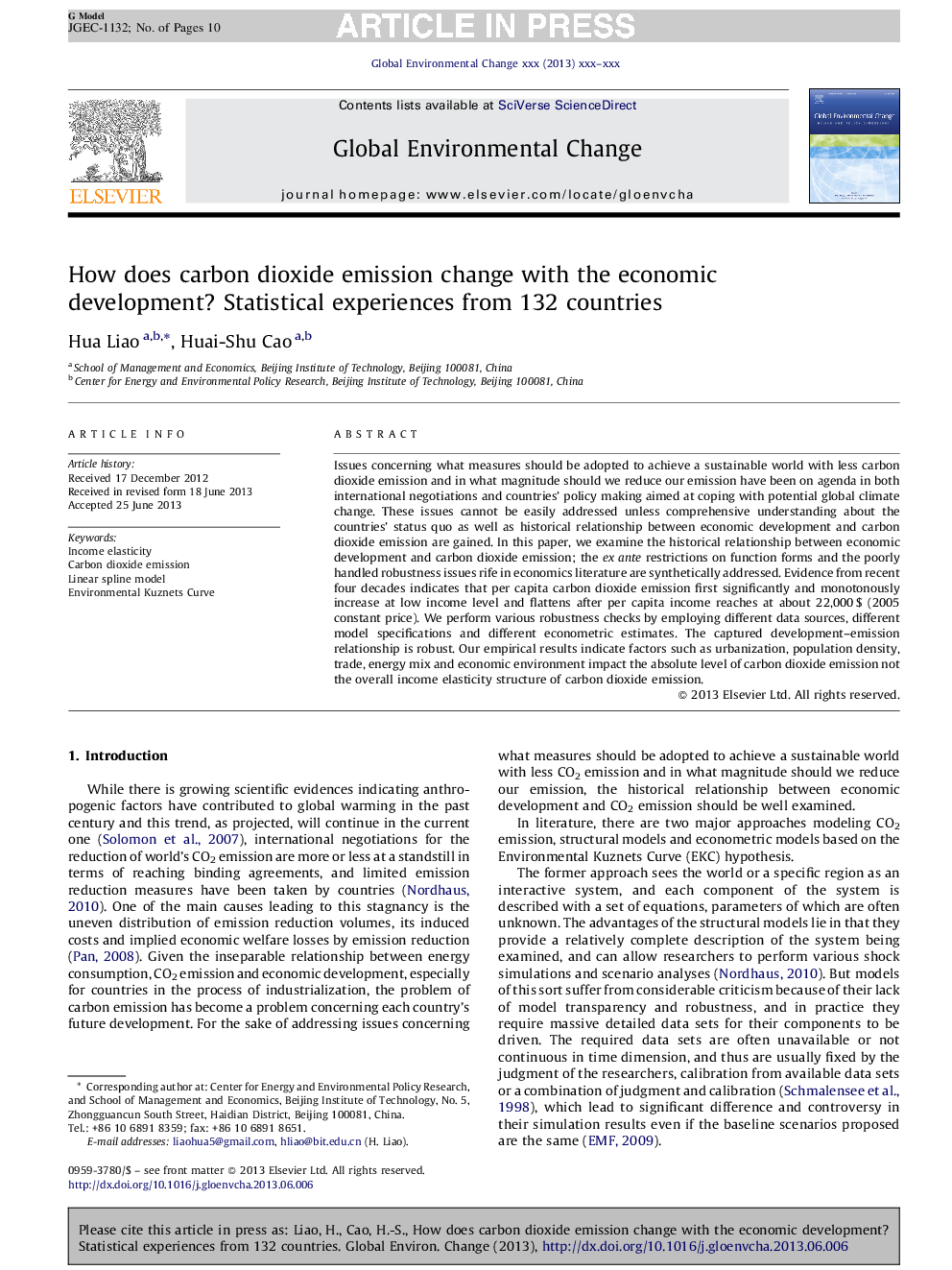| Article ID | Journal | Published Year | Pages | File Type |
|---|---|---|---|---|
| 10505099 | Global Environmental Change | 2013 | 10 Pages |
Abstract
Issues concerning what measures should be adopted to achieve a sustainable world with less carbon dioxide emission and in what magnitude should we reduce our emission have been on agenda in both international negotiations and countries' policy making aimed at coping with potential global climate change. These issues cannot be easily addressed unless comprehensive understanding about the countries' status quo as well as historical relationship between economic development and carbon dioxide emission are gained. In this paper, we examine the historical relationship between economic development and carbon dioxide emission; the ex ante restrictions on function forms and the poorly handled robustness issues rife in economics literature are synthetically addressed. Evidence from recent four decades indicates that per capita carbon dioxide emission first significantly and monotonously increase at low income level and flattens after per capita income reaches at about 22,000Â $ (2005 constant price). We perform various robustness checks by employing different data sources, different model specifications and different econometric estimates. The captured development-emission relationship is robust. Our empirical results indicate factors such as urbanization, population density, trade, energy mix and economic environment impact the absolute level of carbon dioxide emission not the overall income elasticity structure of carbon dioxide emission.
Related Topics
Life Sciences
Environmental Science
Environmental Science (General)
Authors
Hua Liao, Huai-Shu Cao,
